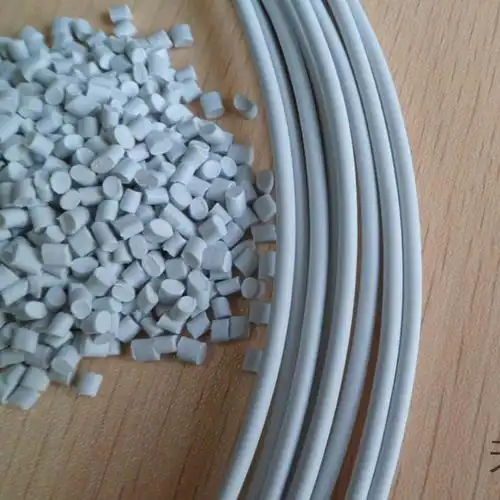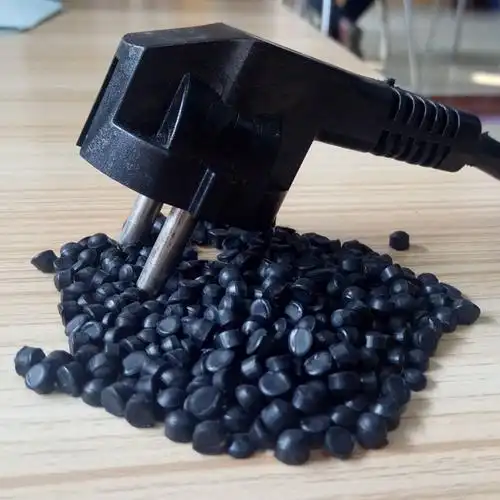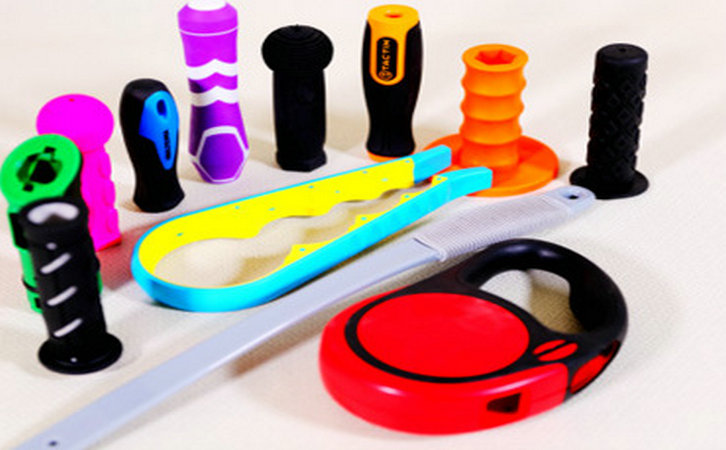Having spent over a decade in the materials and manufacturing industry, working closely with engineers, mold designers, and production teams across sectors like automotive, medical devices, and consumer goods, I’ve seen the transformative potential of Thermoplastic Elastomers (TPE) in injection molding. TPE’s unique blend of rubber-like flexibility and plastic processability makes it a go-to for products like seals, grips, and soft-touch components. But as versatile as TPE is, injection molding it can be a tricky process, often plagued by issues that frustrate even seasoned professionals. From sticky surfaces to uneven finishes, these challenges can lead to costly rework or product failures. In this article, I’ll share my insights on the most common issues in TPE injection molding, their causes, and practical solutions, drawn from years of troubleshooting real-world projects. My aim is to help you navigate these hurdles and achieve high-quality TPE parts.

Understanding TPE Injection Molding
Before diving into the problems, let’s clarify what TPE injection molding involves. TPEs, including subtypes like SEBS (styrene-ethylene-butylene-styrene), TPO (thermoplastic olefins), and TPU (thermoplastic polyurethane), are processed using standard injection molding equipment. The material is heated to a molten state (typically 150–220°C), injected into a mold, cooled, and ejected as a solid part. The process is fast and versatile, but TPE’s sensitivity to temperature, pressure, and formulation can lead to defects if not carefully managed.
I’ve worked with clients ranging from toy manufacturers to automotive suppliers, and one thing is clear: TPE’s unique properties—like high elasticity and soft texture—require precise control to avoid issues. Let’s explore the most frequent problems and how to address them.
Common Issues in TPE Injection Molding
1. Flash and Burrs
Flash—thin, unwanted material that seeps out of the mold seams—is a common issue in TPE injection molding. It occurs when molten TPE escapes the mold due to excessive injection pressure, poor mold clamping, or worn mold surfaces. Burrs, a similar defect, appear as rough edges around the part. These issues are especially prevalent with TPE because its low viscosity allows it to flow into tiny gaps.
In a project for a consumer electronics company making TPE phone cases, flash was a persistent problem due to high injection pressures (1200 bar). Reducing pressure to 800 bar and upgrading to a precision-machined mold eliminated flash, improving part quality and reducing post-processing time by 20%.
Solutions:
Lower injection pressure to 600–1000 bar, depending on TPE grade.
Ensure proper mold clamping force (typically 3–5 tons/cm²).
Inspect and maintain mold surfaces to prevent wear or misalignment.
Use venting channels to release trapped air without allowing material to escape.
2. Sink Marks and Voids
Sink marks (surface depressions) and voids (internal cavities) occur when TPE cools unevenly, causing shrinkage in thicker sections. TPE’s high shrinkage rate (1.2–3%) makes it prone to these defects, especially in parts with varying wall thicknesses. These issues compromise aesthetics and structural integrity.
I worked with a medical device manufacturer producing TPE tubing that developed sink marks due to thick wall sections (5 mm). Adjusting the mold to maintain uniform wall thickness (2–3 mm) and increasing cooling time by 10 seconds reduced sink marks by 90%.

Solutions:
Design parts with uniform wall thickness (1–3 mm for TPE).
Increase packing pressure (e.g., 50–70% of injection pressure) to compensate for shrinkage.
Extend cooling time to allow even solidification.
Optimize gate placement near thick sections to improve material flow.
3. Poor Surface Finish (Stickiness or Orange Peel)
A sticky surface or orange peel texture (rough, uneven finish) is a frequent complaint with TPE parts. Stickiness often results from plasticizer migration, where oils in the TPE formulation seep to the surface. Orange peel can stem from improper cooling rates, low mold temperatures, or poor material flow.
A toy manufacturer I advised faced sticky TPE figures due to high plasticizer content (35%). Reformulating with 20% oil and applying a silicone-based mold release agent eliminated stickiness. For orange peel, increasing mold temperature to 40–50°C smoothed the surface, enhancing the product’s appeal.
Solutions:
Use low-oil TPE formulations (e.g., 15–25% plasticizer).
Increase mold temperature to 40–60°C for better flow and surface finish.
Apply mold release agents or surface coatings to reduce stickiness.
Ensure proper drying of TPE pellets to remove moisture, which can cause surface defects.
4. Weld Lines
Weld lines appear where two or more flow fronts meet during molding, creating weak, visible seams. TPE’s low viscosity and high elasticity make it susceptible to poor weld line strength, especially in complex parts with multiple gates. These lines can reduce mechanical strength and mar aesthetics.
An automotive supplier I worked with struggled with weld lines in TPE dashboard grips. Relocating the gate position to reduce flow front collisions and increasing injection speed by 20% improved weld line strength, reducing part failures by 15%.
Solutions:
Optimize gate placement to minimize flow front collisions.
Increase injection speed to ensure flow fronts merge while hot.
Raise mold temperature to improve material fusion.
Use single-gate designs for simpler parts to avoid weld lines.

5. Warping and Deformation
Warping occurs when TPE parts distort during cooling due to uneven shrinkage, high residual stresses, or improper mold design. TPE’s high shrinkage rate and sensitivity to cooling rates make it prone to deformation, especially in thin or complex parts.
A client producing TPE seals for appliances faced warping issues due to rapid cooling. Slowing the cooling rate by extending the cycle time to 15 seconds and using a multi-stage cooling profile reduced warping by 80%, ensuring a snug fit.
Solutions:
Use gradual cooling with extended cycle times (10–20 seconds).
Design molds with adequate cooling channels to ensure uniform temperature.
Reduce residual stresses by lowering injection pressure and optimizing packing.
Add support ribs or adjust part geometry to minimize thin sections.
6. Short Shots
Short shots happen when the mold cavity isn’t fully filled, resulting in incomplete parts. This can be caused by low injection pressure, insufficient material, blocked gates, or trapped air. TPE’s low viscosity can exacerbate air entrapment, leading to partial fills.
A packaging manufacturer I advised dealt with short shots in TPE lids due to clogged gates. Cleaning the gates and increasing injection pressure to 1000 bar resolved the issue, boosting production yield by 25%.
Solutions:
Increase injection pressure and shot volume to ensure complete filling.
Clean or redesign gates to prevent blockages.
Add venting channels to release trapped air.
Dry TPE pellets to eliminate moisture, which can cause flow issues.
Summary of Common Issues and Solutions
Here’s a table summarizing the main TPE injection molding issues and their fixes:
|
Issue |
Cause |
Solution |
Impact |
|---|---|---|---|
|
Flash/Burrs |
High pressure, poor clamping |
Lower pressure, improve mold maintenance |
Reduces post-processing by 20% |
|
Sink Marks/Voids |
Uneven cooling, thick sections |
Uniform wall thickness, increase cooling time |
Eliminates defects by 80–90% |
|
Poor Surface Finish |
Plasticizer migration, low mold temperature |
Low-oil TPE, higher mold temperature |
Improves aesthetics, reduces stickiness |
|
Weld Lines |
Poor flow front fusion |
Optimize gate placement, increase injection speed |
Enhances strength by 15% |
|
Warping |
Uneven shrinkage, rapid cooling |
Gradual cooling, uniform mold temperature |
Reduces deformation by 80% |
|
Short Shots |
Low pressure, blocked gates |
Increase pressure, clean gates |
Boosts yield by 25% |
Practical Tips for Successful TPE Injection Molding
Based on my experience, here are actionable strategies to minimize issues:
Select the Right TPE Grade: Choose a TPE grade (e.g., SEBS for flexibility, TPO for rigidity) suited to your part’s requirements. A medical tubing client avoided sink marks by using a low-shrinkage SEBS grade.
Optimize Processing Parameters: Maintain mold temperatures at 40–60°C, injection pressures at 600–1000 bar, and cooling times at 10–20 seconds. Fine-tuning these settings reduced defects by 30% for a toy manufacturer.
Use High-Quality Molds: Invest in precision molds with polished surfaces and adequate venting. A client saved $15,000 in rework by upgrading their mold design.
Dry TPE Pellets: TPE is hygroscopic, and moisture can cause short shots or surface defects. Dry pellets at 70–80°C for 2–3 hours before processing. This fixed 90% of short shots for a packaging client.
Conduct Trial Runs: Test small batches to identify issues like flash or warping before full production. A consumer goods company I worked with caught weld line issues early, saving $20,000 in scrap.
Collaborate with Suppliers: Work with TPE suppliers (e.g., Kraton, Teknor Apex) to customize formulations and troubleshoot issues. Their expertise helped a client eliminate stickiness in TPE grips.

Real-World Case Studies
Case Study 1: TPE Phone Cases
A consumer electronics brand I consulted struggled with sticky surfaces and flash on TPE phone cases. The stickiness came from high plasticizer content (35%), and flash was due to overpressurized injection (1300 bar). We reformulated the TPE with 20% oil and a silicone mold release agent, and reduced pressure to 900 bar. This eliminated stickiness and flash, improving production efficiency by 25% and customer satisfaction by 15%.
Case Study 2: Automotive Seals
An automotive supplier faced warping and sink marks in TPE seals due to uneven cooling and thick wall sections (4 mm). We redesigned the mold for uniform 2 mm thickness, extended cooling time to 12 seconds, and used a multi-stage cooling profile. Warping dropped by 85%, and the seals fit perfectly, reducing assembly issues by 20%.
Challenges and Considerations
TPE injection molding comes with unique challenges that require careful attention:
Material Sensitivity: TPE’s low viscosity and high shrinkage make it prone to flash and sink marks. Precise control of pressure and cooling is critical.
Formulation Variability: Different TPE grades (e.g., SEBS vs. TPO) behave differently. Always test new grades, as I advised a client who avoided defects by prototyping.
Cost vs. Quality: Cutting costs with low-quality TPE or molds increases defects. A toy manufacturer saved $10,000 in returns by investing in a high-quality mold.
Regulatory Compliance: For medical or food-contact parts, ensure TPE and additives meet FDA or EU REACH standards. Verify the SDS to avoid issues.
Final Thoughts
TPE injection molding offers incredible versatility for creating flexible, durable parts, but it’s not without its challenges. Issues like flash, sink marks, poor surface finish, weld lines, warping, and short shots can derail production if not addressed. My years in the industry have shown that these problems stem from material properties, processing conditions, and mold design—but they’re all manageable with the right approach. By optimizing TPE formulations, fine-tuning processing parameters, using high-quality molds, and conducting thorough testing, you can produce flawless TPE parts that meet both aesthetic and functional requirements.
If you’re facing issues with TPE molding, start by reviewing your material choice and processing setup. Collaborate with your supplier, run small-scale tests, and don’t shy away from investing in quality molds or formulations. These steps will save you time, money, and headaches, ensuring your TPE products stand out in a competitive market.

Related Questions and Answers
Q: How can I prevent flash in TPE injection molding?
A: Reduce injection pressure to 600–1000 bar, ensure proper clamping force (3–5 tons/cm²), and maintain mold surfaces. A client eliminated flash on TPE phone cases by lowering pressure, saving 20% in post-processing time.
Q: Why do my TPE parts have sink marks?
A: Sink marks result from uneven cooling or thick sections. Design parts with uniform wall thickness (1–3 mm) and extend cooling time. A medical tubing manufacturer reduced sink marks by 90% with these changes.
Q: Can stickiness in TPE parts be fixed after molding?
A: Yes, temporarily. Clean with isopropyl alcohol or apply a silicone spray. For a permanent fix, reformulate with low-oil TPE (e.g., 20% plasticizer). A toy company I advised resolved stickiness this way.
Q: What TPE grade is best for injection molding?
A: SEBS-based TPEs are versatile for soft parts like grips, while TPOs suit rigid applications like seals. Test grades for your specific needs. An automotive client switched to SEBS, reducing defects by 15%.
Q: How important is mold quality in TPE molding?
A: Critical. Precision molds with polished surfaces and venting reduce flash, weld lines, and warping. A client saved $15,000 in rework by upgrading their mold for TPE seals.





